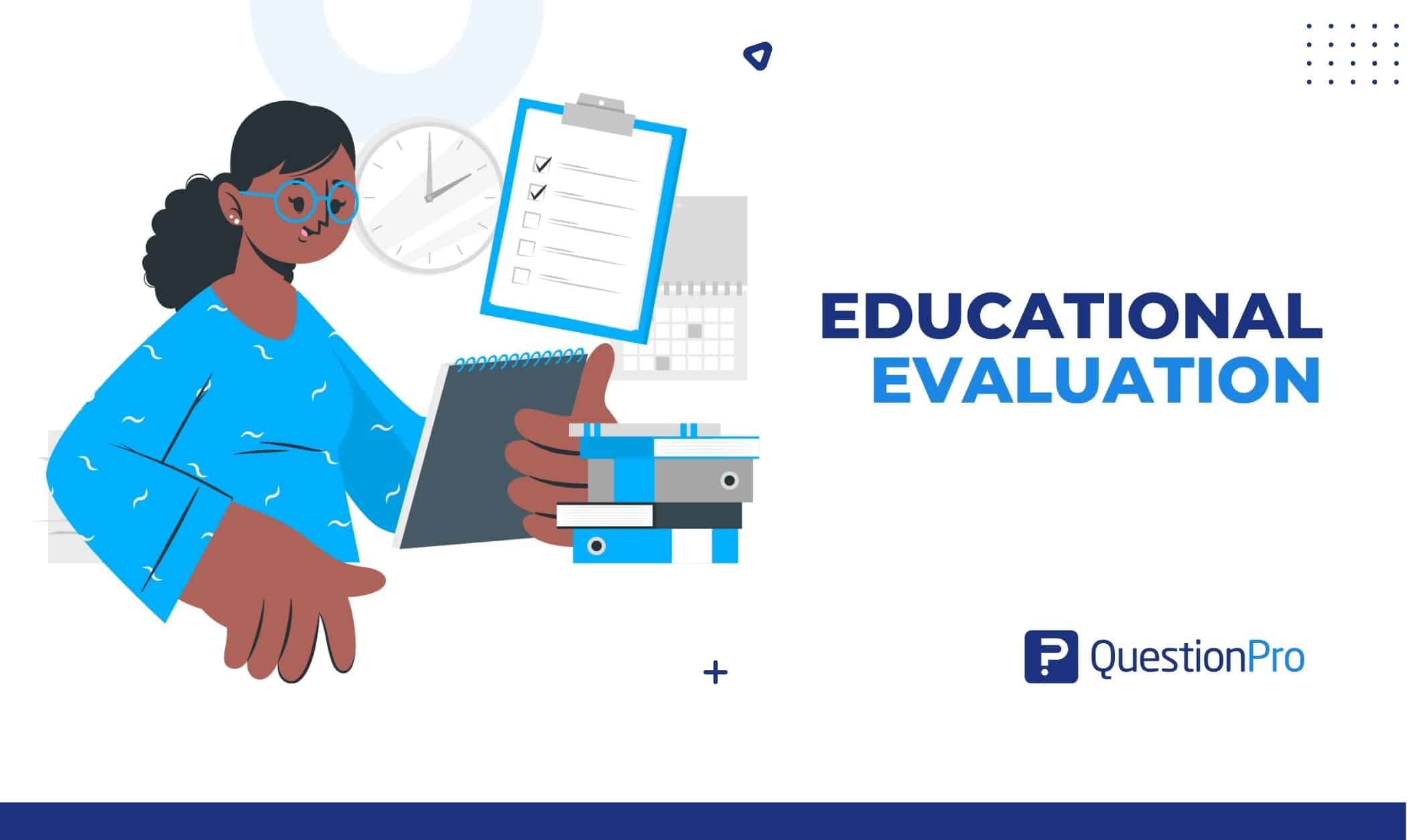
Educational evaluation is acquiring and analyzing data to determine how each student’s behavior evolves during their academic career.
Evaluation is a continual process more interested in a student’s informal academic growth than their formal academic performance. It is interpreted as an individual’s growth regarding a desired behavioral shift in the relationship between his feelings, thoughts, and deeds. A student interest survey helps customize teaching methods and curriculum to make learning more engaging and relevant to students’ lives.
The classroom response system allowed students to answer multiple-choice questions and engage in real-time discussions instantly.
The practice of determining something’s worth using a particular appraisal is called evaluation. This blog will discuss educational evaluation, its importance, and its principles.
LEARN ABOUT: course evaluation survey examples
What is educational evaluation?
An educational evaluation comprises standardized tests that evaluate a child’s academic aptitude in several topics.
The assessment will show if a kid is falling behind evenly in each subject area or whether specific barriers are preventing that student from performing at grade level in a particular subject.
Educational evaluators generally hold a master’s or doctoral degree in education or psychology, and assessments take three to five hours to complete.
Examining the success of program interventions is part of educational evaluation. When it comes to education, these usually have to do with learning (like reading), behavioral, emotional, and social development (like antibullying programs), or more general issues (like changes to the entire school system, like inclusive education).
Importance of educational evaluation
In the teaching-learning process, educational evaluation is crucial since it serves a common goal.
- Diagnostic: Evaluation is a thorough, ongoing process. It aids a teacher in identifying problems and aids a teacher in solving problems with his students.
- Remedial: By remedial work, we imply the appropriate resolution is found once issues are identified. The development of a student’s personality and the desired change in behavior can be achieved with a teacher’s help.
- To make education goals clear: It’s also crucial to define the goals of schooling. The purpose of education is to alter a student’s behavior. A teacher can demonstrate how a learner’s conduct has changed through evaluation.
- It offers guidance: A teacher can only provide advice if he is adequately informed about his students. And only after a thorough assessment that considers all aspects of aptitude, interest, intelligence, etc., can counsel be provided.
- Classification aid: Evaluation is a way for teachers to classify their pupils and assist them by determining their student’s intelligence, ability, and interest levels.
- Beneficial for Improving the Learning and Teaching Process: A teacher can enhance a student’s personality and learn through evaluation, and he can also know the effectiveness of his instruction. As a result, it aids in enhancing the teaching and learning process.
Principles of educational evaluation
The following principles form the foundation of educational evaluation:
- The principle of continuity: Evaluation is a continuous process as long as the student is in school. Evaluation in education is an integral part of the teaching-learning process.
Whatever the learner does should be evaluated every day. Only then could the learner have a better grasp of the language.
- The principle of comprehensiveness: When we say “comprehensiveness,” we look at all aspects of the learner’s personality. It cared about the child’s development in all areas.
- The principle of Objectives: Evaluation should be based on the goals of education. It should help determine where the learner’s behavior needs to be changed or stopped.
- The principle of Learning Experience: Evaluation is also related to the learner’s experiences.
In this process, we don’t just look at the learner’s schoolwork but his extracurricular activities. Both types of activities can help learners gain more experience.
- The principle of Broadness: Evaluation should be broad enough to embrace all elements of life.
- The principle of child-centeredness is: The child is at the center of the evaluation process. The child’s behavior is the most important thing to look at when judging.
It helps a teacher know how much a child can understand and how valuable the teaching material is.
- The principle of Application: During the teaching and learning process, a child may learn many things, but they may not be helpful in everyday life. If he can’t use it, then it’s useless to find. It can be seen through evaluation.
Evaluation decides which student is better at using his knowledge and understanding in different situations to help him succeed.
Conclusion
Educational evaluations are meant to present evidence-based arguments regarding whether or not educational results may be improved by implementing intervention measures. The evaluation objectives are broadening along with the parameters of educational assessment.
Understanding the various learning exams and evaluations will help you identify the testing most helpful for your child and the causes of any issues or learning disparities they may be experiencing.
You might need a professional’s help to decide whether your child needs an evaluation and what kind of assessment they need.
LEARN ABOUT: course evaluation survey examples
Students have a lot to say. Therefore, it should be significant to let them know their input is needed to change how they are taught. Quick survey creation is possible with programs like QuestionPro and LivePolls, which can help improve academic performance and foster student experience.







